
|
|

|
YOU ARE HERE>>REAL or FAKE>>Fake Roman brooches>>page 2
The Roman hound and hare brooches.
By tommynodot
10th September 05
[Edited December 2015 - to cover the hound and hare type brooch specifically]

This one a few years later, sold as a reproduction.

........and then in 2013 sold as genuine.



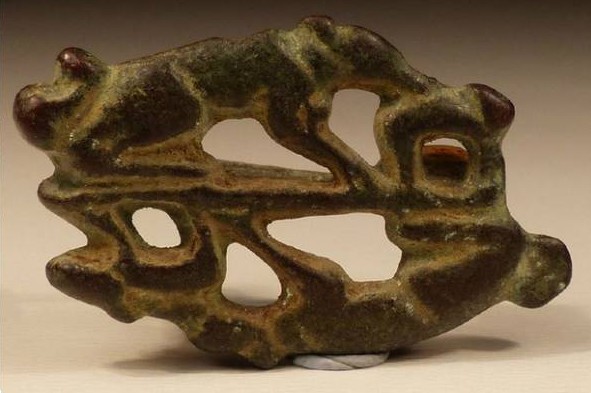
Then...... but is it another or the same piece?
(Seller is a generally perfectly reliable seller)
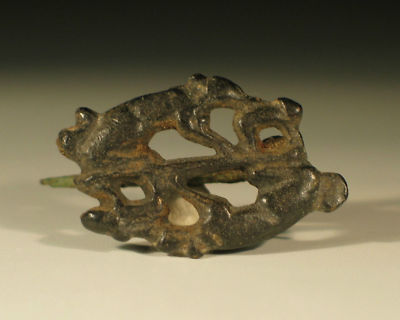
And.....
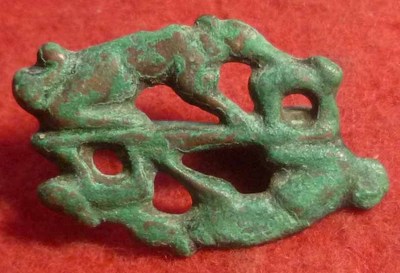
A little chemical treatment...
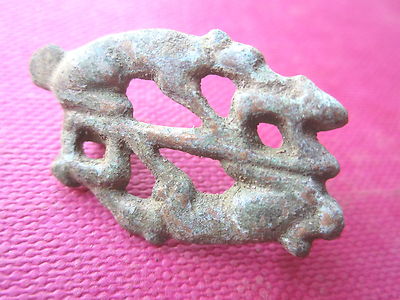

This one below offered on eBay but the seller said that he/she unsure if it is genuine.



The one above left I'm told is being or has been offered as genuine. (Thanks to E. D. for the images)
Some of these look quite moderately convincing ( others very clearly fakes).
UPDATE:
I've now heard that the rather more plausible looking one was with a legitimate dealer who most definitely does not sell fakes.
On being alerted to this issue it was immediately removed from sale
Hope to hear further about that one as a confirmation one way or the other would be very helpful to know about.
Another pair - notice the tails?

Yet another from this factory. Same fake dirt as well.
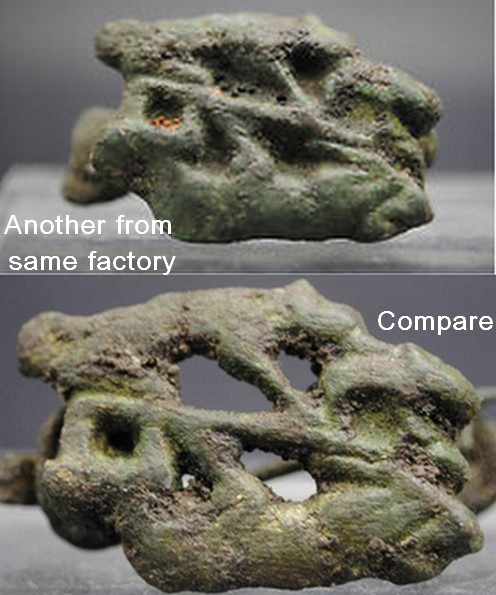
From Renate.
(Whose opinion on brooches must be taken very seriously indeed)
No, they're all fake. No doubt. I attached some pages of an article written by Matouschek/Nowak.
It's part of an articles series concerning animal brooches found in Austria, published in an Austrian annual magazine.
I think the articles are of interest for you. Maybe I'll scan them next year.
I can send this pdf to anyone who wants a copy.


I have found only two close parallels of the type .
But there are subtle differences
Would be really pleased to hear from anyone who actually has an archaeologically attested example.


I have found some more parallels of the type.

Reference for the gilded example.
Lyon, rue des Farges (69), L. 37mm; avant 280;
doree(Cat. Farges 1985, p.35, N. 279)
Principal differences is the angle of the back and the open work tail, often damaged on this type.
The fakes have two different dog tails on the same brooch.
This common fake , with the double hound and hare is actually based upon a quite rare brooch type.
Far more common is the single type, which is actually rather different.

One here above sold as "in the style of"
I have not researched this single type sufficiently to be able to comment on the authenticity of these apart from two which are from the PAS database bottom left and right.
The lovely silver gilt brooch is also no doubt genuine.
From Renate again.
Thanks for the additional information. I'll try to find an image of the Sellye piece mentioned by Sarnia Butcher.
Looks like the gilded one is the archetype of the fakes / reproductions.
Who knows?
Of the fakes shown on your page:
First of all they all can be identified as fakes, because they all have the same shape.
The differences are: Some casting moulds were in better condition than others,
some casts were done more careful than others,
and various metals and surface treatments were used.
Although the silvery fibulae have a few more details than the "bronze" ones,
such as a more detailed tail their design has the same origin. These differences are superficial,
they have nothing to do with the basic design and can be altered easily.
The tiny lugs with the holes for the axis bar are always fixed at the end where the dog with fuzzy rabbit tail is.
The hare of that pair always has ears, the other one was born without them which makes a nice point for rising a first red flag.
Each of the two pairs is shaped individually, just as done in antiquity.
They differ at leg positions or the thickness of body parts, but the type of tail never differs that much.
None of the genuine brooches of that time depicting dogs/hounds shows a rabbit-like tail like this one.
Ancient brooches /always/ were reworked very carefully to remove casting remains such
as parting lines / redundant metal and for decoration.
The fakes aren't. i.e the genuine pieces have eyes, and the central bar is decorated
(separation line between the two animal pairs on the gilded French piece,
vertical lines on the others).
Ancient brooches usually have some damage caused by using,
and very often you can see traces of tools (such as files) on the reverse.
The fakes haven't.
The pins visible on the fakes will not work (i.e. fixing notch in wrong position),
and they have the wrong shape.
The genuine type in fact do not have hinged pins but have spring coils
The one with the coil shown on your page was a modern copper wire before



Further update.

(Pl. XXI, 16). This type is well known from the 'Limes Germanicus' , from the Rhineland and the Hungarian Plain."
The 'Limes Germanicus' (Latin for Germanic frontier) was a line of frontier (limes) fortifications that bounded the ancient Roman provinces of Germania Inferior, Germania Superior and Raetia, dividing the Roman Empire and the unsubdued Germanic tribes from the years 83 to about 260 AD. At its height, the limes stretched from the North Sea outlet of the Rhine to near Regensburg (Castra Regina) on the Danube. Those two major rivers afforded natural protection from mass incursions into imperial territory, with the exception of a gap stretching roughly from Mogontiacum (Mainz) on the Rhine to Castra Regina.
The centre bar here looks plain, but there might be to be some vertical lines right at the middle point of the bar.
Not sure about the upper hound's tail is it openwork? All the other genuine examples of this type have open work tails.
Maybe there is a shadow there, or maybe it is not openwork but the catch-plate or the loop(s) are placed behind this point.
The text does not discuss the pin and in fixing at all.
It's interesting to note that these replicas of this type do have
vertical lines on the centre bar and one has open work tails.

They keep coming!
Jan 2016





Home | About This Site | Privacy Statement | Gallery | Testimonials | Guarantees
About Collectors' Resources pages | What's New
Search | Site Map | Contact Us